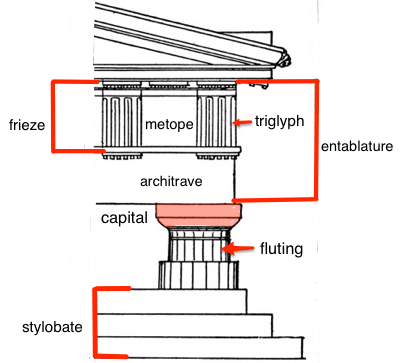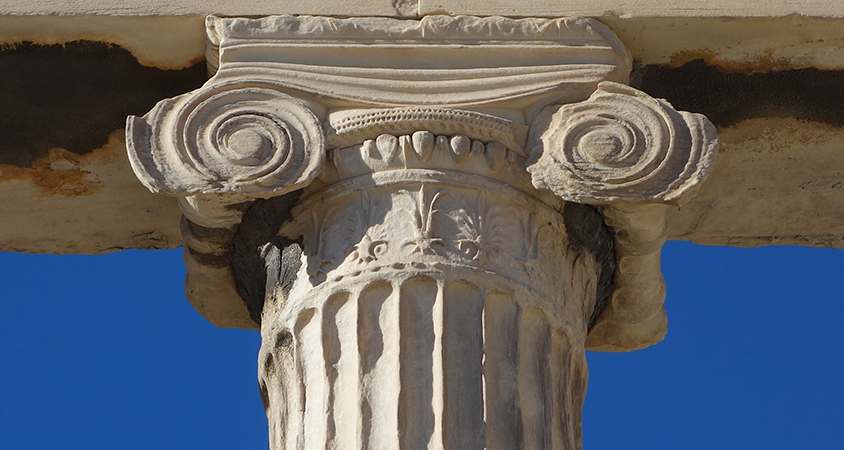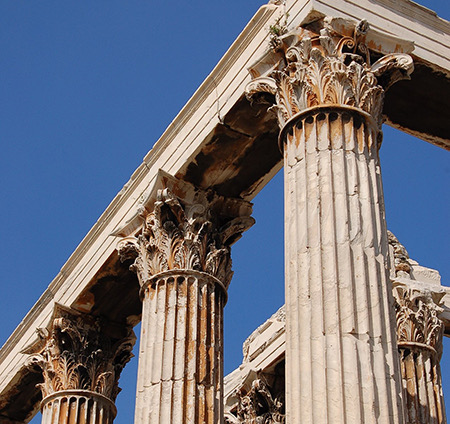Greek architecture is known for its elegance, harmony, and proportion. The ancient Greeks were master builders, and their architectural style has had a profound impact on the development of architecture throughout the world. The 3 Orders of Greek Architecture are the Doric, Ionic, and Corinthian Orders.
Each order has its own unique characteristics and was used in different types of buildings. In this article, we will explore the evolution of architecture and take a closer look at the 3 Orders of Greek Architecture.
1. The Doric Order

The Doric Order is one of the three orders of Greek architecture, and it is known for its simplicity and strength. The Doric Order was the earliest of the three orders and was used primarily in the construction of temples and public buildings. The Doric Order is characterized by its thick, sturdy columns and plain capitals.
The columns of the Doric Order are typically fluted, which means that they have vertical grooves running down the length of the column. The fluting is said to have originated as a way of strengthening the column and making it more stable. The columns of the Doric Order are also typically wider at the base and narrower at the top, which gives them a sense of stability and solidity.
The capitals of the Doric Order are plain and unadorned, which is in contrast to the more ornate capitals of the Ionic and Corinthian Orders. The capital of the Doric Order is called the abacus, which is a flat slab that sits on top of the column. The abacus is typically wider than the column itself, which gives the column a sense of stability and solidity.
The Doric Order is also known for its simplicity and lack of ornamentation. The Doric Order is said to be the most ancient of the Greek architectural orders, and it is thought that the Doric Order was influenced by the architecture of the Minoan civilization. The Doric Order is also said to be the most masculine of the Greek architectural orders, and it is often associated with the ideals of strength and stability.
The Doric Order was used primarily in the construction of public buildings and temples. The Parthenon, one of the most famous buildings in ancient Greece, is an example of a temple built in the Doric Order. The Temple of Apollo at Delphi and the Temple of Zeus at Olympia are also examples of temples built in the Doric Order. The Doric Order was also used in the construction of public buildings such as the Agora, which was the center of public life in ancient Greece.
2. The Ionic Order

The Ionic Order is one of the three orders of Greek architecture, and it is known for its elegance and ornate capitals. The Ionic Order was developed later than the Doric Order and was used primarily in the construction of public buildings and private residences. The Ionic Order is characterized by its slender columns and ornate capitals, which feature volutes or spiral-like shapes.
The columns of the Ionic Order are typically fluted, and are more slender than the columns of the Doric Order. The columns are also taller than the columns of the Doric Order, which gives the buildings a sense of grace and elegance. The columns of the Ionic Order typically have a base, which is a series of stacked disks that sits on top of the stylobate or foundation of the building.
The capitals of the Ionic Order are ornate and feature volutes or spiral-like shapes. The capital of the Ionic Order is called the echinus, which is a circular disk that sits on top of the column. The echinus is typically wider than the column itself, which gives the column a sense of stability and solidity. The capital of the Ionic Order also features a series of leaves or acanthus leaves, which are said to be a symbol of life and vitality.
The Ionic Order is also known for its elegance and ornateness. The Ionic Order is said to be the most feminine of the Greek architectural orders, and it is often associated with the ideals of grace and elegance. The Ionic Order was used primarily in the construction of public buildings and private residences. The Erechtheion, one of the most famous buildings in ancient Greece, is an example of a temple built in the Ionic Order. The Temple of Athena Nike and the Theseion are also examples of temples built in the Ionic Order.
3. The Corinthian Order

The Corinthian Order is the last and most ornate of the three orders of Greek architecture. The Corinthian Order is known for its elaborate capitals, which feature acanthus leaves and other decorative elements. The Corinthian Order was developed later than the Doric and Ionic Orders and was used primarily in the construction of public buildings and private residences.
The columns of the Corinthian Order are similar to those of the Ionic Order, but they are even more slender and taller. The columns of the Corinthian Order are typically fluted, and they have a base, which is a series of stacked disks that sits on top of the stylobate or foundation of the building.
The capitals of the Corinthian Order are the most ornate and elaborate of the three orders. The capital of the Corinthian Order is called the abacus, which is a square or rectangular disk that sits on top of the column. The abacus is typically wider than the column itself, which gives the column a sense of stability and solidity. The capital of the Corinthian Order also features a series of leaves or acanthus leaves, which are said to be a symbol of life and vitality.
The Corinthian Order is also known for its ornateness and decoration. The Corinthian Order is said to be the most feminine of the Greek architectural orders, and it is often associated with the ideals of grace and elegance. The Corinthian Order was used primarily in the construction of public buildings and private residences. The Choragic Monument of Lysicrates is an example of a monument built in the Corinthian Order. The Temple of Olympian Zeus, and the Roman Pantheon are also examples of buildings built in the Corinthian Order.


1 Comment
Pingback: The Ultimate Guide to All-Inclusive Resorts in Corfu - Knowing Greece